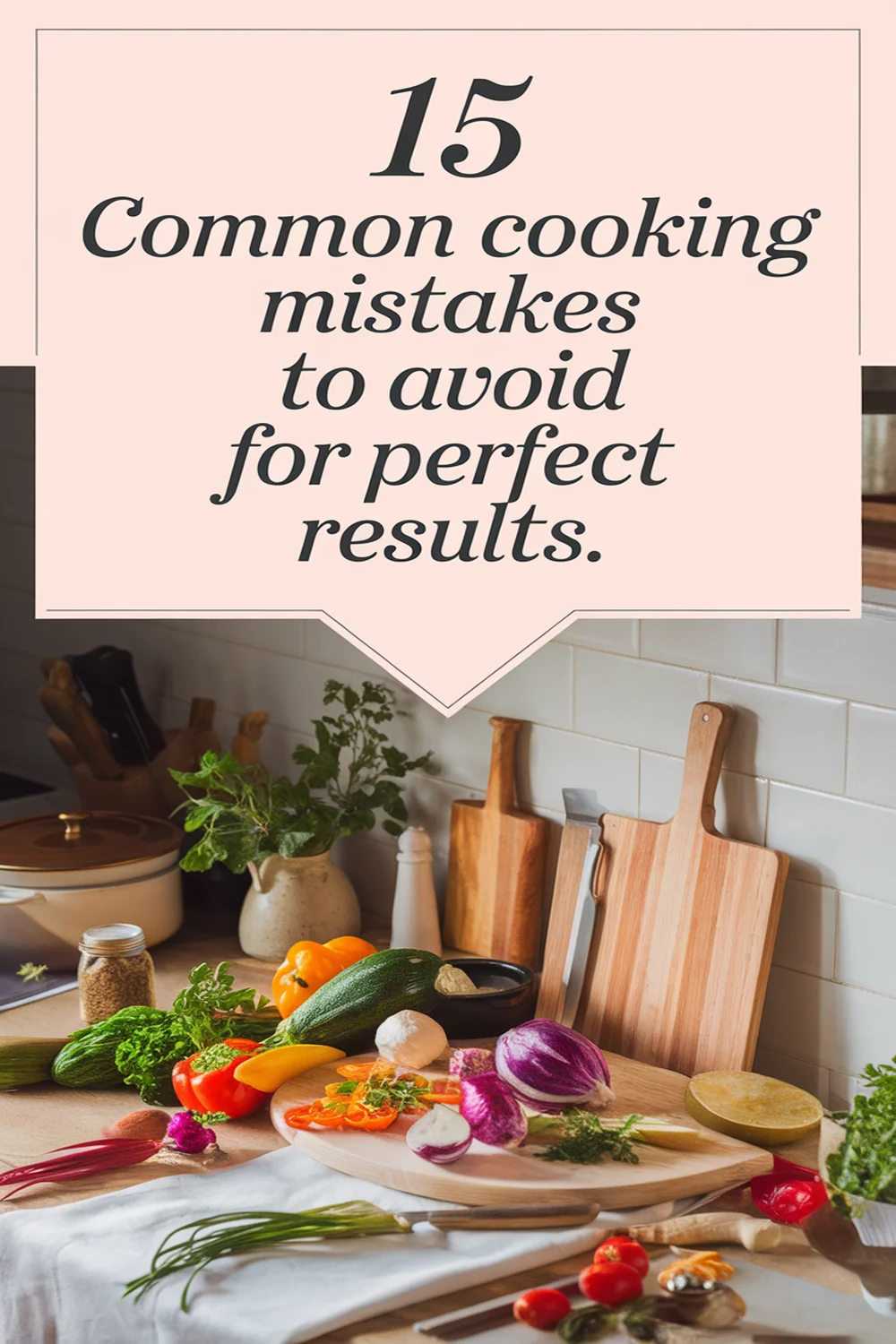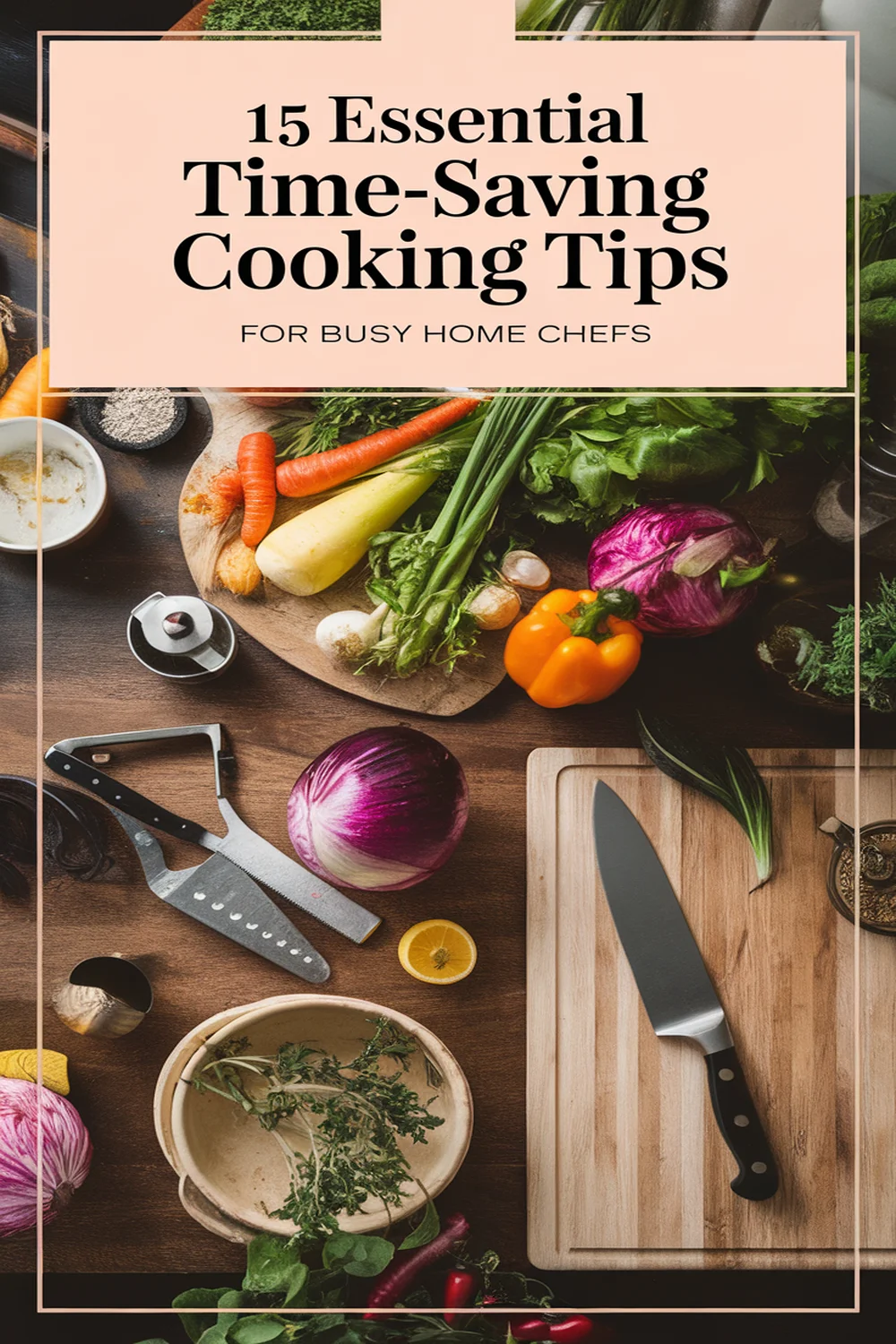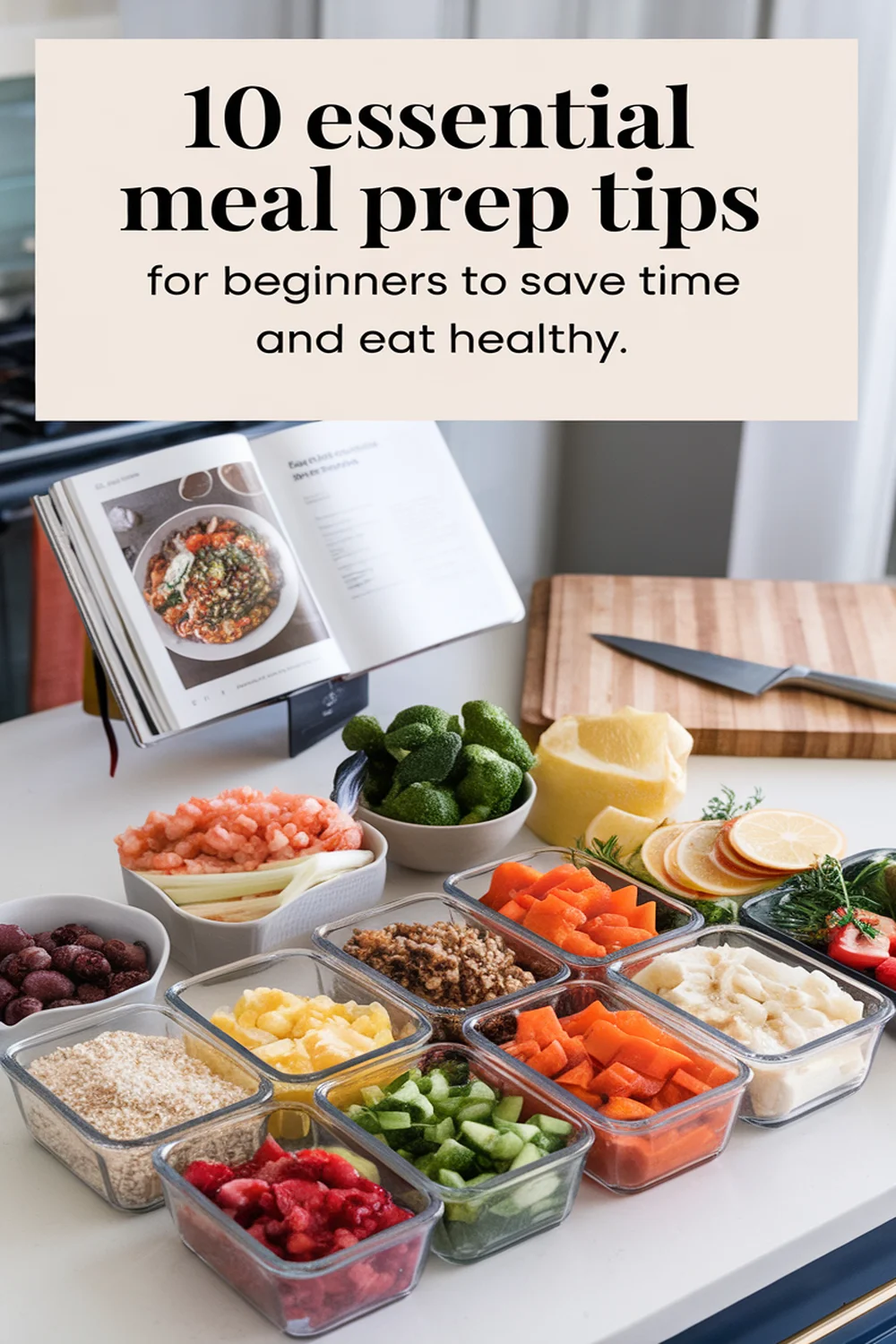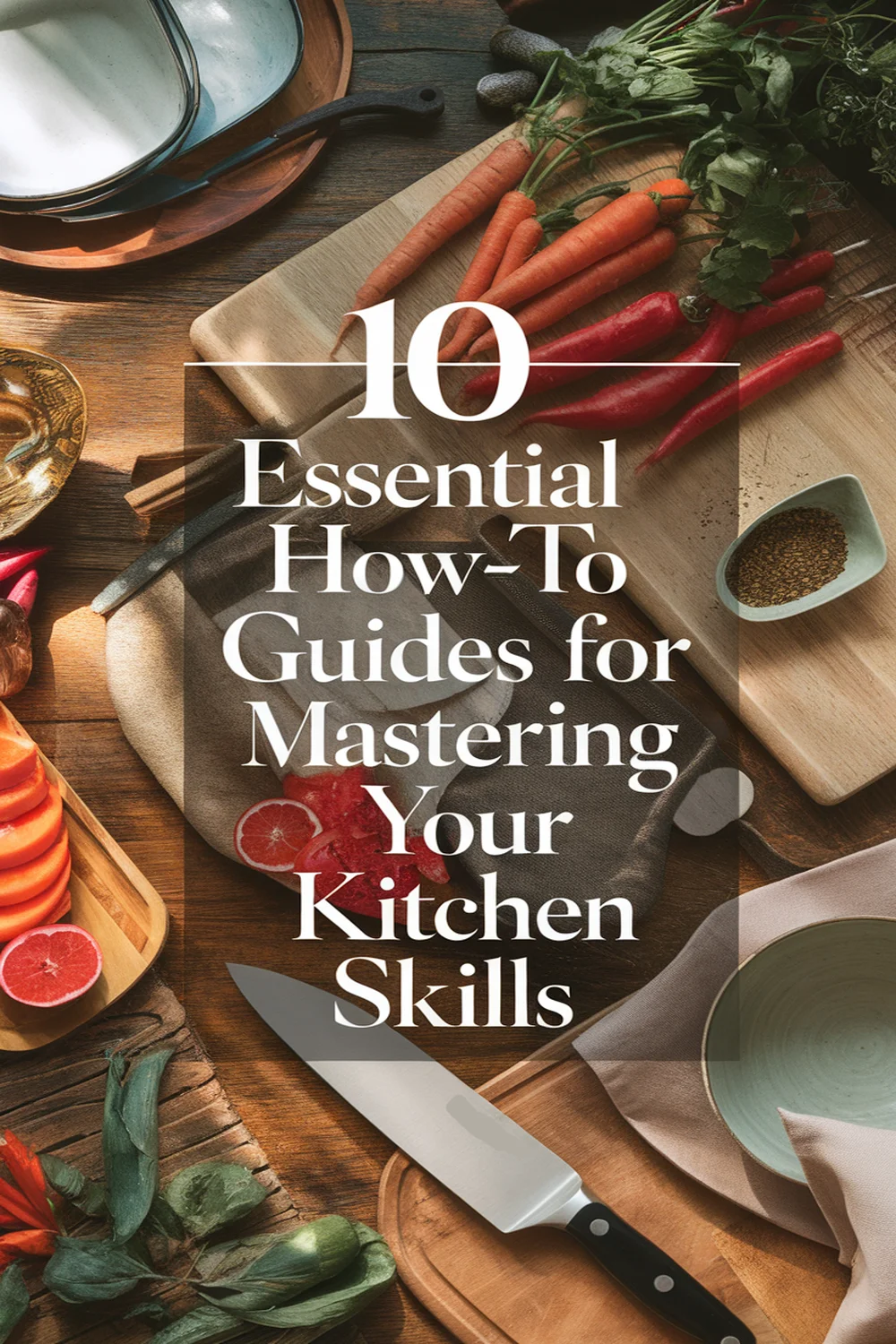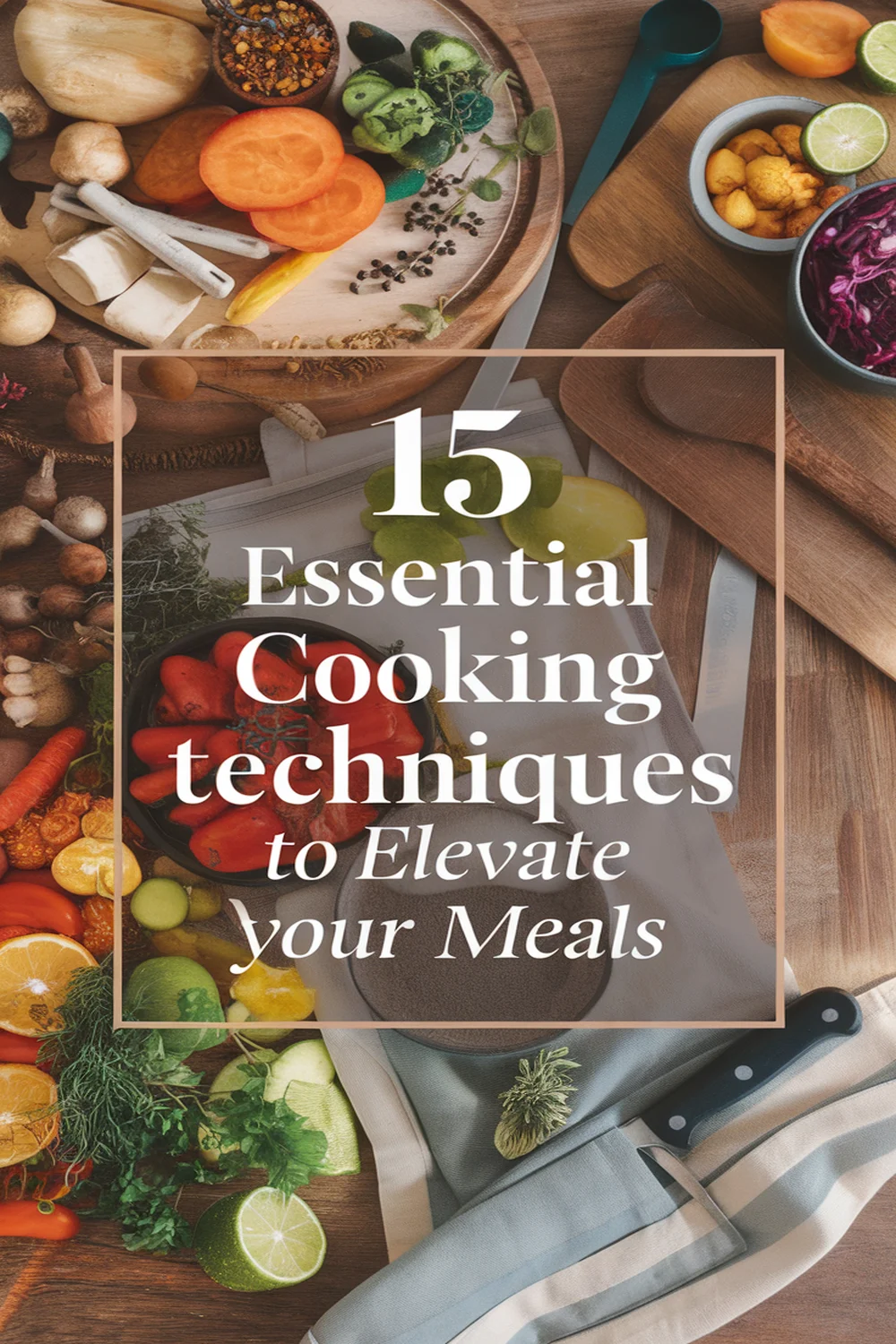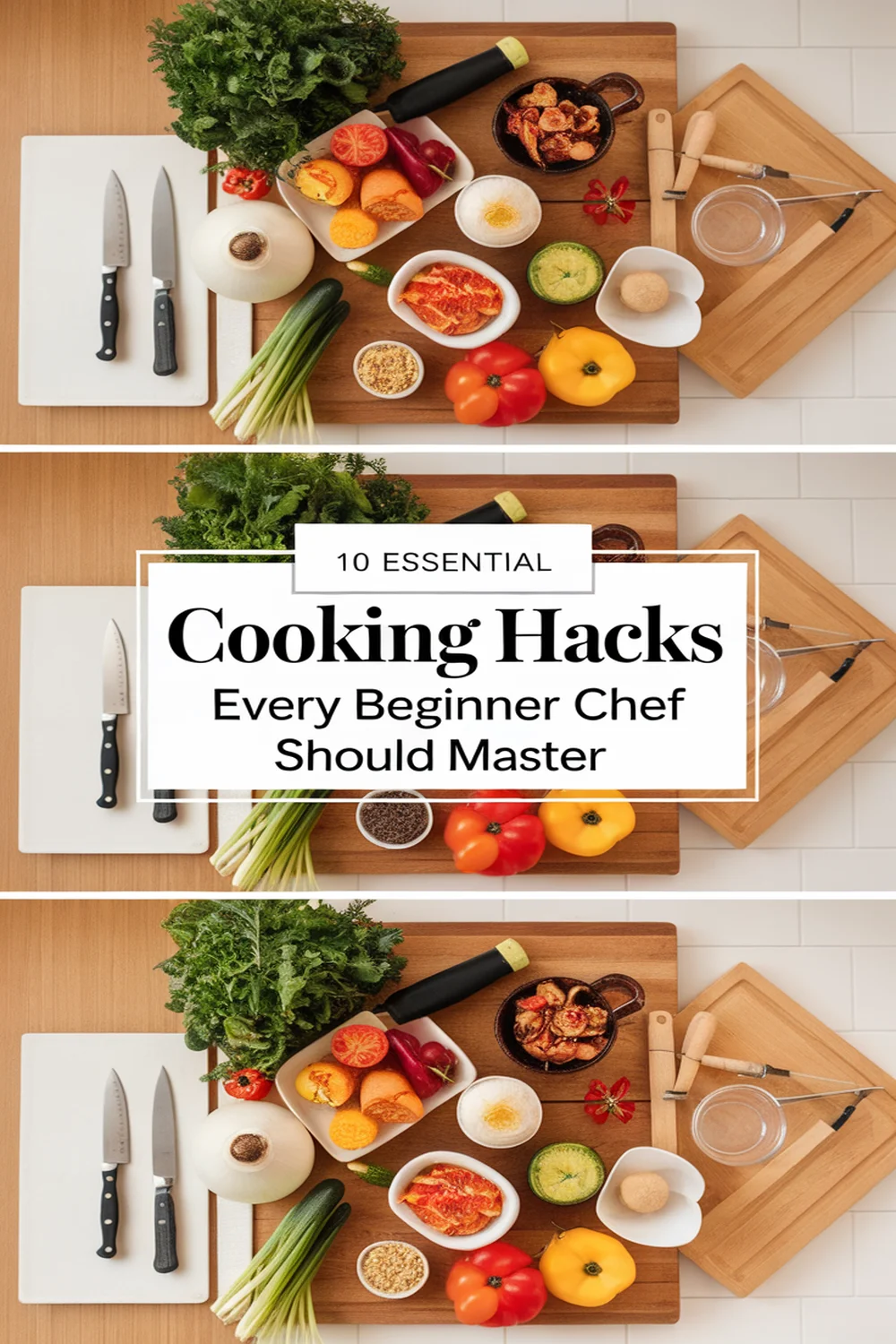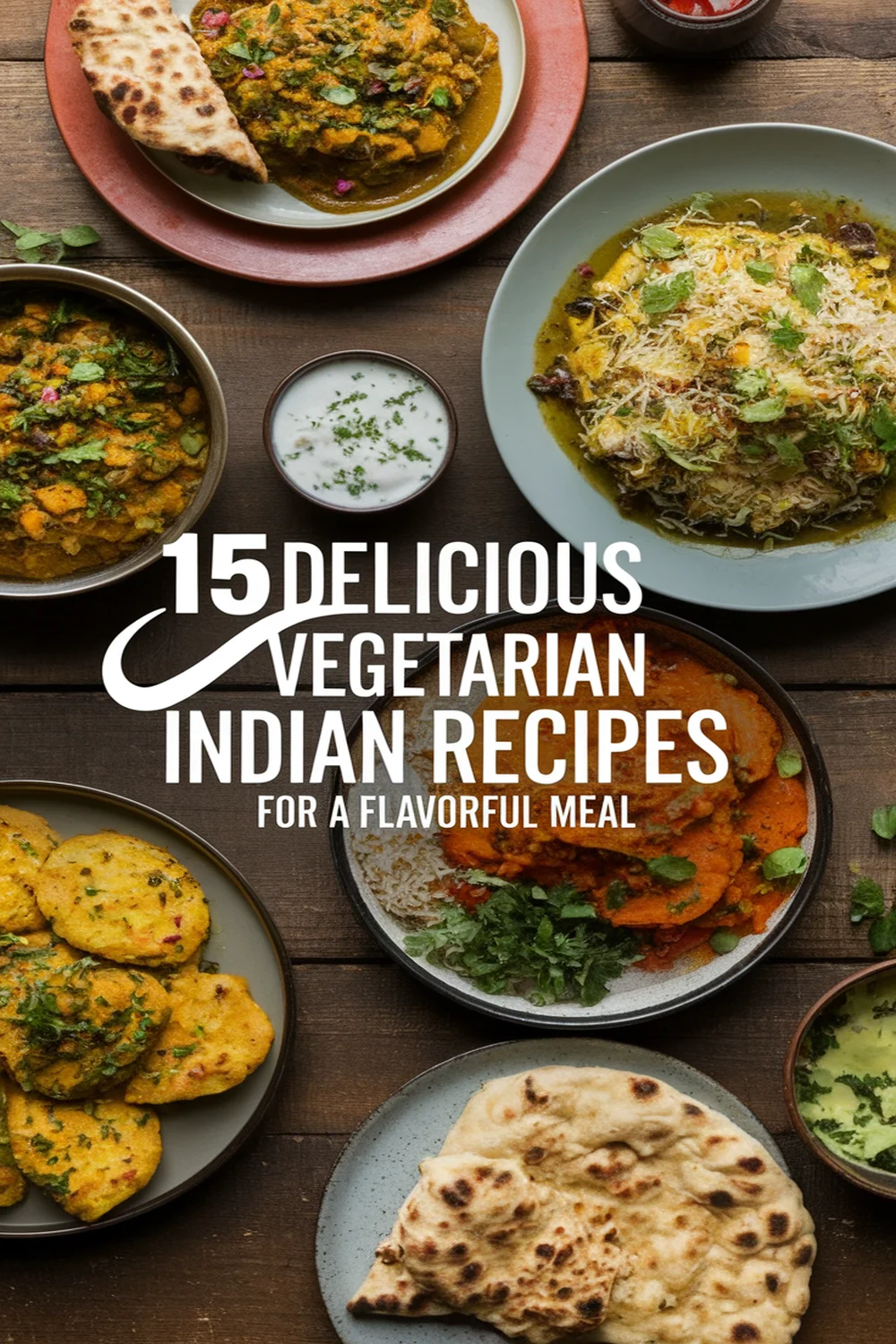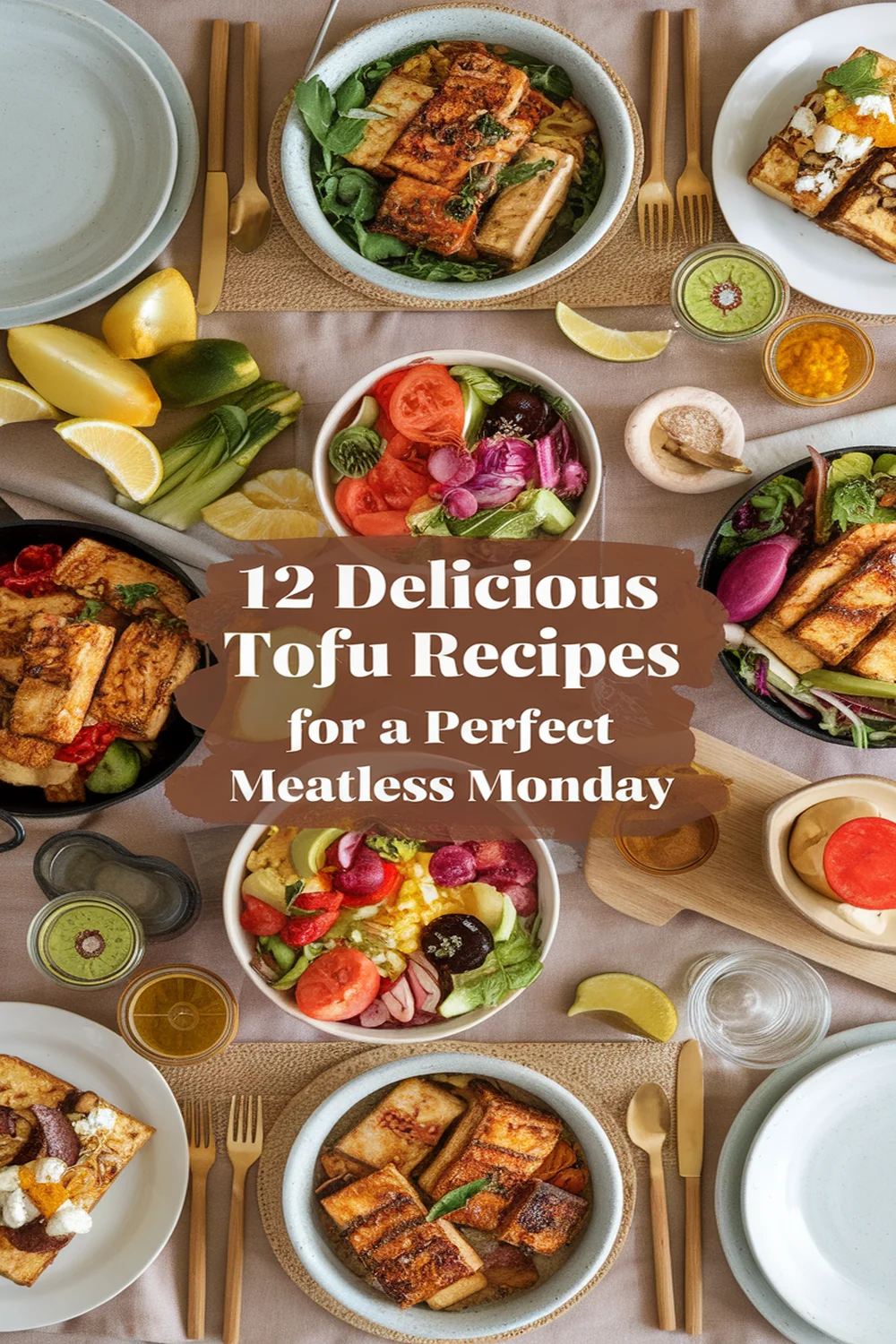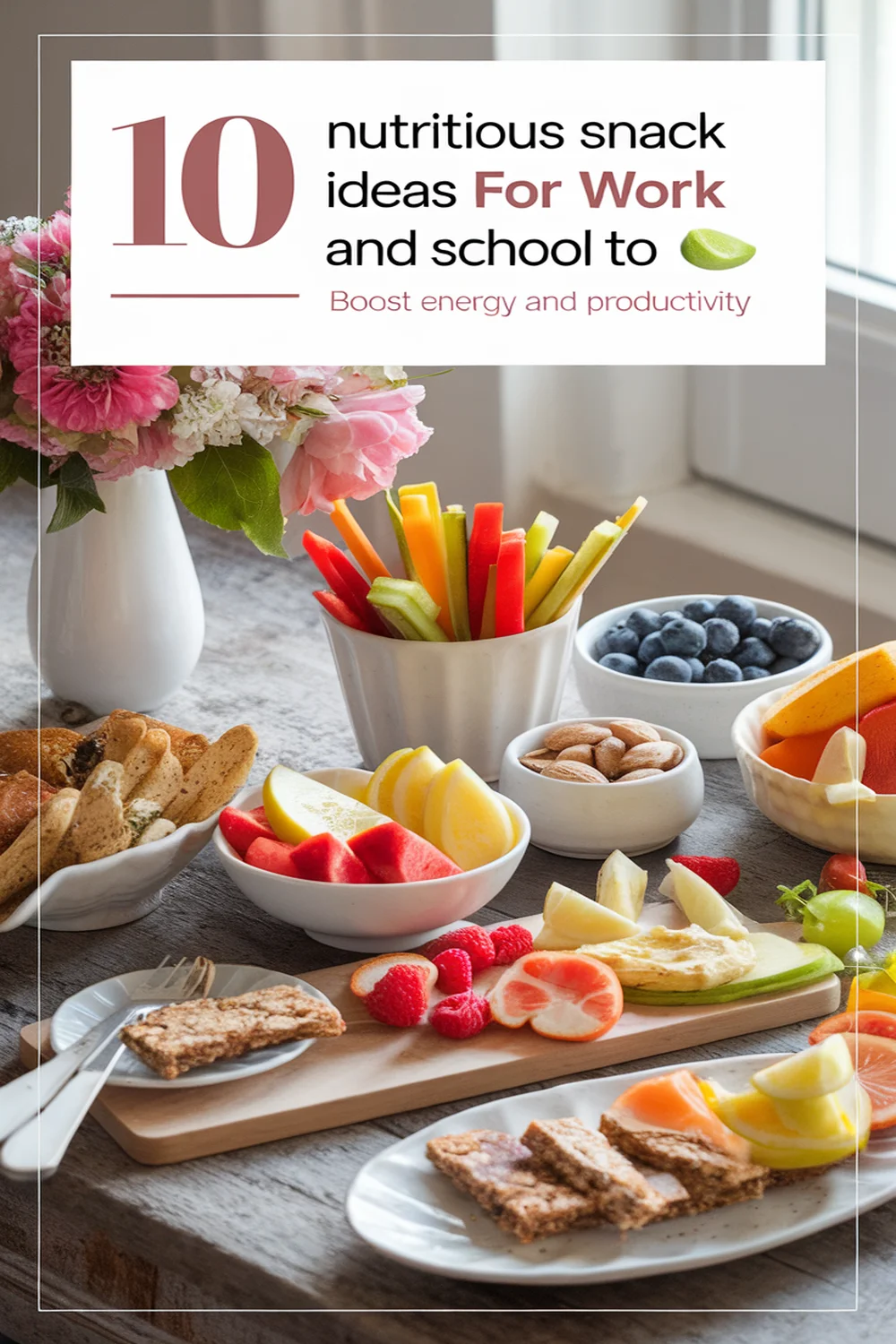This post may contain affiliate links. Please read our policy page.
To avoid common cooking mistakes, always prioritize mise en place to keep your workspace organized. Don’t skip preheating the oven and use sharp knives for efficient cutting. Avoid overcrowding your pan, as it can lead to steaming instead of searing. Season your food properly and remember to taste as you cook for balance. Ultimately, be mindful of stovetop differences and store leftovers correctly. Follow these tips for perfect results every time—there’s more helpful insight ahead!
Skipping the Mise En Place

When it comes to cooking, properly organizing your ingredients and tools can make all the difference in the outcome of your dish. Skipping the mise en place—the French culinary term meaning “everything in its place”—can lead to chaos in the kitchen. Without gathering and prepping your ingredients ahead of time, you may find yourself scrambling mid-recipe, which can result in overcooked components, missed ingredients, and ultimately, an unsatisfactory meal.
By embracing the mise en place, you guarantee a smoother cooking process and a more enjoyable experience. Taking a few moments to prepare can also enhance your creativity. With everything laid out and ready for use, you can focus your attention on the recipe rather than searching for that elusive spice jar you forgot to take out.
Furthermore, this organized approach can help you spot any missing ingredients before you start cooking. Now let’s plunge into a straightforward recipe that showcases the benefits of a thorough mise en place.
Ingredients:
- 2 cups of diced vegetables (bell peppers, onions, and carrots)
- 1 cup of cooked protein (chicken, tofu, or chickpeas)
- 2 cloves of garlic, minced
- 1 tablespoon of olive oil
- 1 teaspoon of salt
- 1 teaspoon of black pepper
- 1 teaspoon of dried oregano
- 1 teaspoon of paprika
- Fresh parsley for garnish
Begin by gathering all your ingredients and chopping the vegetables into even-sized pieces. Heat the olive oil in a large skillet over medium heat. Once hot, add the diced vegetables and sauté for 5-7 minutes until they’re slightly softened.
Add the minced garlic, protein, salt, black pepper, oregano, and paprika, stirring to combine. Cook for an additional 5-10 minutes, confirming everything is heated through and well blended. Remove from heat and garnish with fresh parsley before serving.
When cooking, make sure you have a clean workspace to make the mise en place truly effective. Use separate bowls for each ingredient and label them if necessary to avoid confusion.
Keep a trash bowl handy for quick waste disposal, and always taste your dish throughout the cooking process to adjust seasonings. This not only gives you a chance to refine flavors but also keeps you engaged in the cooking experience. Happy cooking!
Not Preheating the Oven

When it comes to baking or roasting, one of the most vital steps often overlooked by home cooks is preheating the oven. Preheating guarantees that your dish starts cooking immediately at the correct temperature, allowing for even cooking and ideal texture. For example, if you’re baking cookies or a cake, not preheating the oven can result in flattened cookies or dense cakes that don’t rise properly. This essential step can make the difference between a perfectly baked treat and a culinary disaster.
In this recipe, we’ll explore how to make a classic chocolate chip cookie while emphasizing the importance of preheating your oven. By preheating, you’ll not only achieve the right texture but also a beautifully golden color. So, let’s make certain we’ve a piping hot oven ready to cook your cookies to perfection!
Ingredients:
- 1 cup unsalted butter, softened
- 3/4 cup granulated sugar
- 3/4 cup brown sugar, packed
- 1 teaspoon vanilla extract
- 2 large eggs
- 2 1/4 cups all-purpose flour
- 1 teaspoon baking soda
- 1/2 teaspoon salt
- 2 cups semi-sweet chocolate chips
Start by preheating your oven to 350°F (175°C). In a large mixing bowl, cream together the softened butter, granulated sugar, and brown sugar until the mixture is light and fluffy.
Add in the vanilla extract and eggs, one at a time, mixing well after each addition. In a separate bowl, whisk together the flour, baking soda, and salt. Gradually add the dry ingredients to the wet mixture until just combined, then fold in the chocolate chips.
Using a cookie scoop or tablespoon, drop rounded balls of dough onto a lined baking sheet. Bake for 10-12 minutes or until the edges are lightly golden. Allow to cool slightly before transferring to a wire rack.
When baking cookies, it’s important to keep an eye on them towards the end of the baking time; ovens can vary, and you don’t want to overbake them. For a chewier cookie, take them out while they still look a little underbaked in the center—they will continue to cook on the baking sheet.
Additionally, don’t overcrowd your baking sheets to guarantee even heat distribution and perfect cookies every time. Finally, consider using an oven thermometer to confirm your oven is accurately calibrated, as a miscalibrated oven can throw off your baking results considerably.
Recommended Items
Check out our recommended products and equipment to enhance your cooking experience—happy cooking!
Products
Using Dull Knives
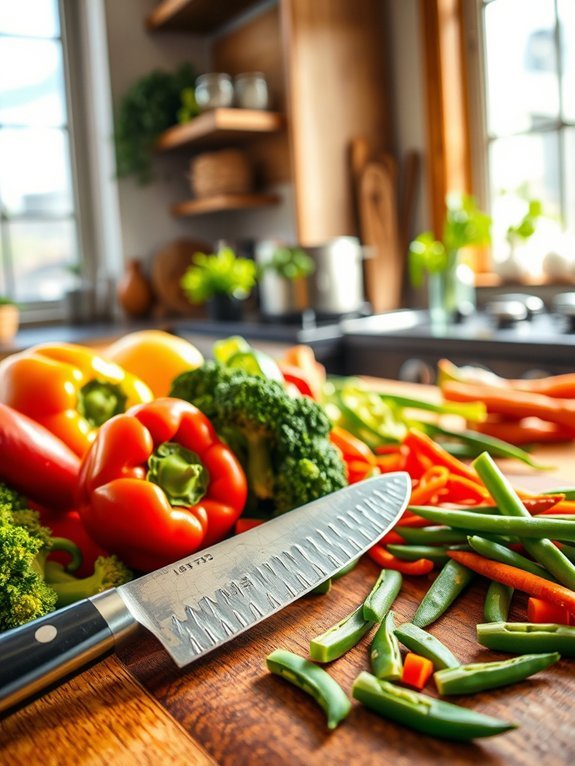
In the culinary world, the importance of sharp knives can’t be overstated. They aren’t just a tool for cutting, but an extension of a chef’s precision and creativity. When you use dull knives, you risk damaging ingredients, which can result in uneven cooking and compromised flavors. A sharp knife requires less force, allowing the user to make clean cuts. This is especially important when preparing dishes that rely on the integrity of the ingredients, such as salads, carpaccio, or so many beautiful vegetable side dishes.
For our dish focusing on the necessity of using sharp knives, we’ll prepare a vibrant Vegetable Stir-Fry. Utilizing a sharp knife will allow you to quickly and accurately slice vegetables into uniform pieces, resulting in a beautifully cooked and appealing dish. Whether you’re using bell peppers, broccoli, carrots, or snap peas, having your produce cut into similar sizes will help guarantee even cooking and prevent some vegetables from becoming overcooked while others remain raw.
Ingredients:
- 1 cup bell peppers (red, yellow, and green), sliced
- 1 cup broccoli florets
- 1 cup snap peas
- 1 cup carrots, julienned
- 3 cloves garlic, minced
- 2 tablespoons ginger, minced
- 3 tablespoons soy sauce
- 2 tablespoons vegetable oil
- Salt and pepper to taste
- Cooked rice or noodles for serving
Heat the vegetable oil in a large skillet or wok over medium-high heat. Once hot, add the minced garlic and ginger, sautéing until fragrant, about 30 seconds.
Then, add the vegetables, stirring frequently to guarantee they cook evenly. Sauté for about 5-7 minutes until the vegetables are tender yet crisp. Drizzle in the soy sauce, season with salt and pepper to taste, and mix well before serving over a bed of rice or noodles.
When cooking stir-fry, remember that high heat is essential for achieving that signature smoky flavor. Use your sharp knife to prepare your vegetables in advance; uniform pieces will guarantee they all cook at the same rate, forming a beautiful and harmonious dish.
Finally, don’t overcrowd the pan, as this will lower the temperature and create steam rather than a nice sear on your vegetables. Enjoy the benefits of using well-maintained knives to create this delicious and colorful dish!
Overcrowding the Pan
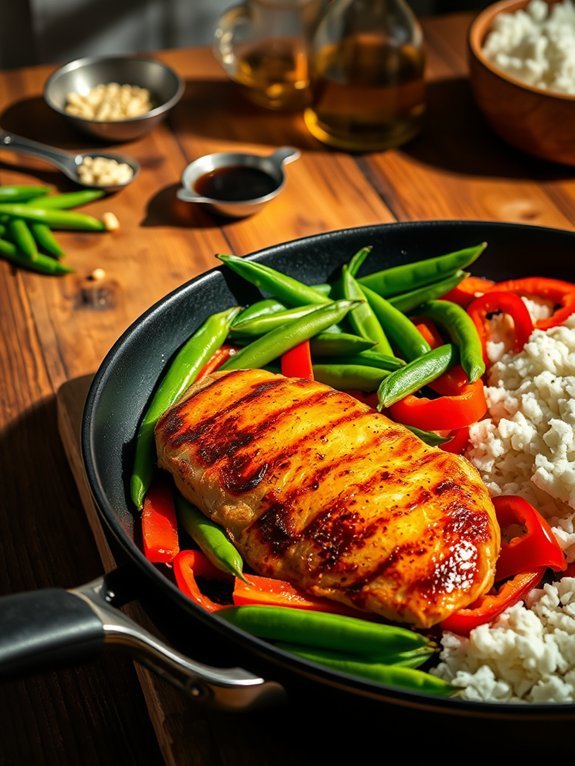
When cooking, it’s tempting to load your pan with as much food as possible to save time. However, overcrowding the pan can lead to uneven cooking and unwanted results, such as steaming instead of searing. The key to achieving perfectly cooked meals is to give each ingredient enough space to interact with the heat, guaranteeing a beautiful golden color and the right texture. This is especially true for dishes like stir-fries, sautés, and seared meats where the searing process is vital for flavor development.
Moreover, overcrowding can result in moisture buildup, leading to soggy food instead of the crispy perfection you desire. An overcrowded pan holds heat inefficiently and can greatly extend cooking time, resulting in overcooked, less flavorful dishes. Taking the time to work in batches can elevate the quality of your meal, making it far more satisfying than if you rushed through the cooking process.
Ingredients:
- 1 pound of protein (chicken, beef, shrimp, or tofu)
- 2 tablespoons of vegetable oil
- 2 cups of mixed vegetables (bell peppers, broccoli, snap peas)
- 3 cloves of garlic, minced
- 1 tablespoon of soy sauce
- 1 teaspoon of sesame oil
- Salt and pepper to taste
- Cooked rice or noodles for serving
Heat a large skillet or wok over medium-high heat, then add the vegetable oil. Once the oil is hot, add the protein of your choice, making sure not to overcrowd the pan. Allow it to sear for 3-4 minutes before turning to finish cooking.
Remove the protein and keep it warm while you add the mixed vegetables to the same pan. Sauté them for 2-3 minutes, then add the minced garlic and cook for an additional minute. Return the protein to the pan, pour in the soy sauce and sesame oil, and season to taste with salt and pepper. Toss everything to combine, and serve hot over cooked rice or noodles.
When cooking, always remember to batch your ingredients for ideal results. If you find that your pan is getting full, consider removing some items temporarily and cooking in stages. This will guarantee that each piece gets the attention it deserves and helps to achieve that perfect browning or crispiness.
Also, make sure to have all your ingredients prepped and on hand before you start cooking—this will allow for a smoother process without the risk of burning your food while you scramble to chop or measure other ingredients. Happy cooking!
Ignoring the Importance of Seasoning
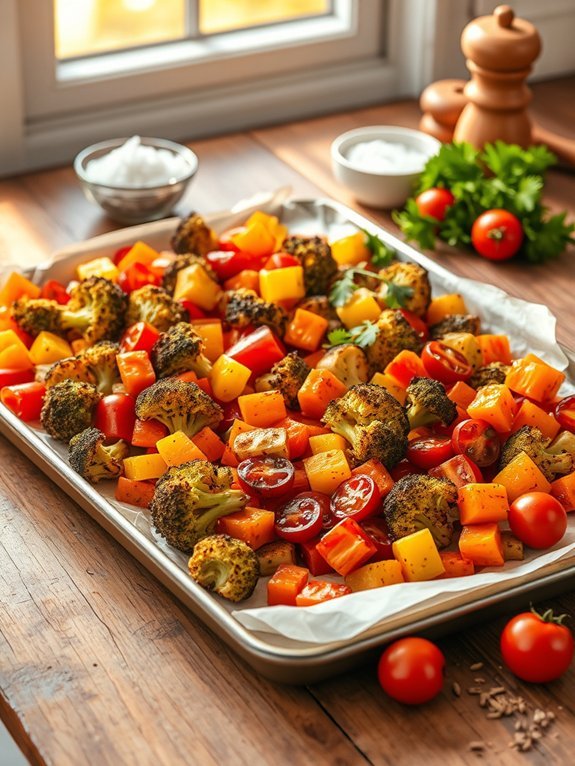
Seasoning is the key to transforming a good dish into a great one. It’s the art of enhancing the natural flavors of your ingredients while adding depth and complexity. A common mistake many home cooks make is underestimating the amount and type of seasoning to use or neglecting it altogether.
This recipe focuses on a simple yet delicious roasted vegetable medley that illustrates the power of seasoning in cooking.
Roasting vegetables amplifies their natural sweetness and brings about a delightful caramelization, creating a perfect canvas for an array of seasonings. By carefully selecting your herbs and spices, you can create a dish that bursts with flavor. Whether you’re new to cooking or an experienced chef, mastering the use of seasoning can elevate even the simplest of dishes.
- 2 cups of broccoli florets
- 1 cup of diced bell peppers (any color)
- 1 cup of sliced carrots
- 1 cup of cherry tomatoes
- 3 tablespoons of olive oil
- 2 teaspoons of salt
- 1 teaspoon of black pepper
- 1 teaspoon of garlic powder
- 1 teaspoon of onion powder
- 1 teaspoon of dried oregano
- 1 teaspoon of paprika
- Fresh parsley for garnish (optional)
Preheat your oven to 425°F (220°C). In a large mixing bowl, combine the broccoli, bell peppers, carrots, and cherry tomatoes. Drizzle the olive oil over the vegetables, then add the salt, black pepper, garlic powder, onion powder, oregano, and paprika.
Toss everything together until the vegetables are well coated in the oil and seasonings. Spread the mixture evenly on a baking sheet lined with parchment paper. Roast in the preheated oven for 25-30 minutes, or until the vegetables are tender and slightly charred.
When cooking vegetables, it’s crucial to remember that seasoning can be adjusted to personal taste. Don’t be afraid to taste your mixture before roasting! You can add more salt, pepper, or any other seasonings you prefer.
Additionally, consider using fresh herbs if available, as they can provide a bright flavor contrast to the roasted veggies. Finally, let your roasted vegetable medley cool slightly before serving; this will help meld the flavors together even further. Enjoy!
Cooking With a Cold Pan

Cooking with a cold pan is a common mistake that can lead to unevenly cooked dishes and poor flavor development. When you start with a cold pan, ingredients don’t get the sear or browning they need, which often results in a less-than-stellar texture and taste. The initial heat is vital for caramelization, which enhances the depth of flavors in various recipes.
This technique is particularly important when sautéing vegetables or searing proteins, as the Maillard reaction is triggered by high heat and helps to create that delicious golden crust we all crave.
For this recipe, we’re going to prepare a simple yet flavorful sautéed chicken and vegetables. Not only will this dish allow you to practice cooking with a hot pan, but it also highlights the importance of proper timing and temperature. By ensuring your pan is hot before adding your ingredients, you’ll achieve perfectly cooked chicken with a delightful golden exterior and tender veggies that maintain their vibrant colors and crunch.
Ingredients:
- 2 boneless, skinless chicken breasts
- 2 tablespoons olive oil
- Salt and pepper to taste
- 1 red bell pepper, sliced
- 1 zucchini, sliced
- 1 cup broccoli florets
- 2 cloves garlic, minced
- 1 tablespoon soy sauce
- Fresh parsley for garnish
Start by heating your skillet over medium-high heat. Once the pan is hot, add the olive oil, swirling it around to coat the surface evenly. Season the chicken breasts with salt and pepper, then place them in the pan. Sear each side for about 5-7 minutes until golden brown and fully cooked. Remove the chicken from the pan and set it aside.
In the same skillet, add the sliced vegetables and garlic, sautéing for 3-4 minutes until they’re tender but still crisp. Add the soy sauce to the vegetables, toss to combine, and return the chicken to the skillet for an additional minute to warm through before serving.
When cooking with a hot pan, it’s essential to keep an eye on your temperature. If your pan starts to smoke, lower the heat slightly, but if it’s not sizzling when you add your ingredients, you may need to wait a bit longer. Additionally, avoid overcrowding the pan, as this can cause the temperature to drop and lead to steaming rather than sautéing.
Remember to let your proteins rest for a couple of minutes after cooking for better juiciness, and feel free to experiment with different vegetables or seasonings based on your preferences!
Cooking Mistakes to Avoid
Not Using a Thermometer
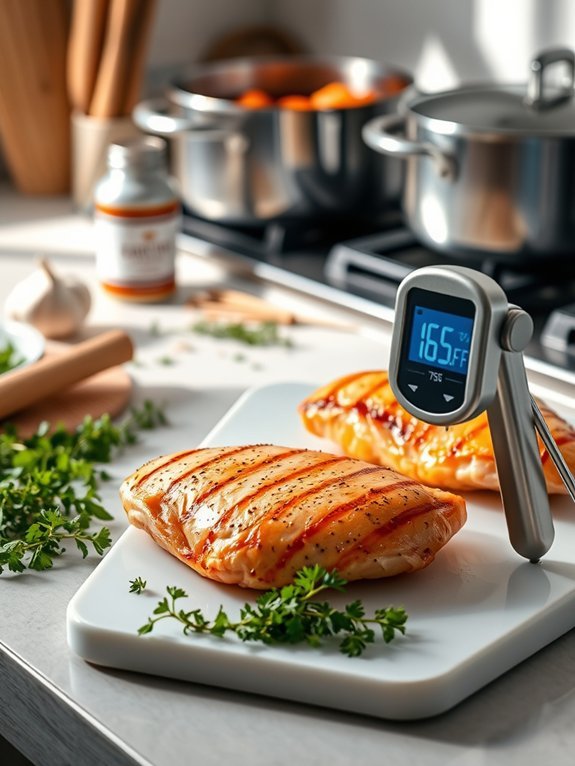
Cooking meat to perfection often comes down to precisely monitoring its temperature, and one of the most common mistakes many amateur chefs make isn’t using a thermometer. Whether you’re preparing a succulent roast chicken, a juicy steak, or a tender piece of fish, a food thermometer can help guarantee that your dish isn’t just safe to eat but also cooked exactly how you desire.
Different types of meat require various internal temperatures to achieve the best flavor and texture, so investing in a reliable thermometer can elevate your cooking game considerably.
To illustrate the importance of this tool, let’s prepare a classic dish: perfectly cooked chicken breasts. By following this recipe and utilizing a thermometer, you can achieve juicy, tender chicken that boasts both safety and flavor. This dish is versatile and can serve as the centerpiece for a simple weeknight dinner, or be sliced up for salads, sandwiches, or wraps throughout the week.
Ingredients:
- 2 boneless, skinless chicken breasts
- 2 tablespoons olive oil
- 1 teaspoon garlic powder
- 1 teaspoon onion powder
- 1 teaspoon smoked paprika
- Salt and pepper to taste
- Fresh herbs (e.g., thyme or parsley) for garnish (optional)
In a large skillet, heat the olive oil over medium heat. While the oil is heating, season both sides of the chicken breasts with garlic powder, onion powder, smoked paprika, salt, and pepper.
Once the oil is shimmering, carefully place the seasoned chicken breasts in the skillet. Cook for approximately 6-7 minutes on one side, then flip.
Using a food thermometer, check the internal temperature; it should reach 165°F (75°C) to confirm it’s safely cooked. Cook on the second side until the same temperature is achieved. After cooking, let the chicken rest for 5 minutes before slicing or serving.
When preparing chicken breasts, it’s essential to avoid overcooking, which can lead to dry meat. For best results, make sure your thermometer is calibrated correctly and insert it into the thickest part of the meat, without touching the bone, if applicable.
Additionally, if you prefer a more intense flavor, consider marinating the chicken for a few hours before cooking. This not only enhances the taste but also contributes to keeping the meat moist during the cooking process.
Rushing the Cooking Process

Cooking is an art that benefits greatly from patience and mindfulness. Rushing through any aspect of the cooking process, from preparation to the actual cooking stage, can lead to mistakes that affect the flavor and texture of your dish. When you take the time to properly prepare your ingredients and follow each step of the recipe, your meal not only tastes better but is also more enjoyable to create.
One dish that exemplifies this principle is a simple, yet elegant risotto.
Risotto is a classic Italian dish known for its creamy texture and versatility. The key to perfect risotto lies in the slow addition of broth and the constant stirring of the rice. This technique helps to release the starches from the rice, resulting in that signature creaminess. Rushing through the cooking process can prevent the rice from achieving its ideal texture, leading to a dish that’s either undercooked or gluey instead of being rich and smooth.
Ingredients:
- 1 cup Arborio rice
- 4 cups chicken or vegetable broth
- 1 small onion, finely chopped
- 2 tablespoons olive oil
- 1/2 cup dry white wine
- 1/2 cup grated Parmesan cheese
- 2 tablespoons butter
- Salt to taste
- Freshly ground black pepper to taste
- Fresh parsley, chopped (for garnish)
Begin by heating the broth in a saucepan over low heat; it should remain warm throughout the cooking process.
In another large pot, heat the olive oil over medium heat and add the chopped onion, cooking until translucent. Add the Arborio rice, stirring for about 2 minutes until the grains are well-coated and slightly toasted. Next, pour in the white wine, allowing it to absorb into the rice.
Once the wine has evaporated, gradually add the warm broth, one ladle at a time, stirring consistently until the liquid is mostly absorbed before adding more. Continue this process until the rice is al dente and the risotto has reached a creamy consistency, typically about 18-20 minutes.
Finally, remove from heat, stir in butter and Parmesan cheese, and season with salt and pepper.
When cooking risotto, it’s essential to maintain a steady pace, so be sure to allow yourself enough time to dedicate to the dish. Avoid the urge to rush by preparing all ingredients in advance and keeping your broth warm, as this helps minimize interruptions.
Additionally, remember to stir continuously and adjust the heat as needed; cooking too quickly can lead to burnt rice or uneven cooking. Embrace the process, enjoy the fragrant aromas developing along the way, and savor the pleasure of creating a delicious meal.
Not Letting Meat Rest
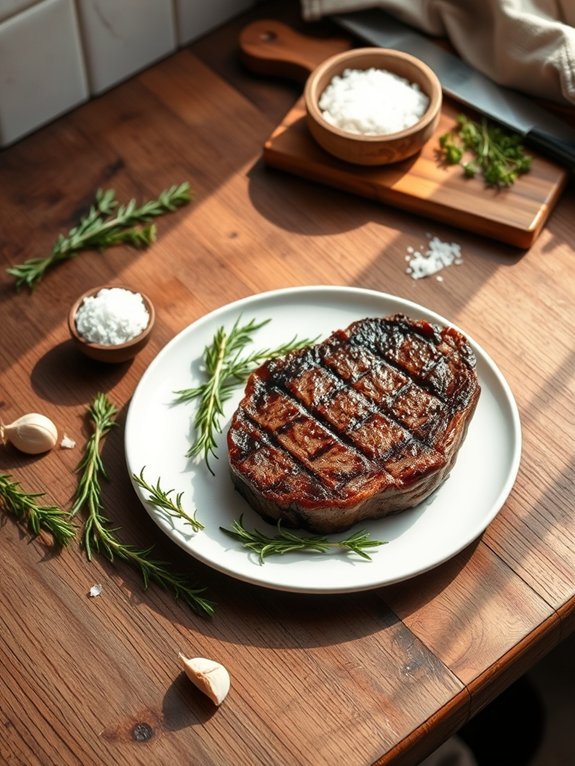
When preparing meat, whether it’s a juicy steak, a perfectly roasted chicken, or tender pork chops, one of the most essential yet often overlooked steps is allowing the meat to rest after cooking. Resting is important because it allows the juices that have been driven to the center of the meat to redistribute throughout the cut. By skipping this step, you’ll end up with dry, flavorless meat that doesn’t showcase the effort you’ve put into cooking it.
The rest period can vary depending on the size and type of meat, but generally, larger cuts like roasts should rest for at least 15-30 minutes, while smaller cuts like individual steaks should rest for about 5-10 minutes. During this time, cover the meat loosely with foil to keep it warm, while avoiding steam that can make the crust soggy. This simple addition will elevate your dish and create a much more enjoyable dining experience.
Ingredients:
- 2 ribeye steaks (or preferred cut)
- Salt
- Freshly ground black pepper
- Olive oil
- 2 cloves garlic, minced
- Fresh rosemary sprigs (optional)
Cook the steaks by heating a skillet or grill to high heat. Season both sides generously with salt and pepper and add a tablespoon of olive oil to the pan. Once the oil is shimmering, carefully place the steaks in the pan. For medium-rare, cook the steaks for about 4-5 minutes on each side, adjusting the time for desired doneness.
Once cooked, remove the steaks from the heat and let them rest on a plate for at least 10 minutes before slicing.
When resting your meat, consider the environment it’s placed in. Make sure it’s in a warm area (or use a light cover) to maintain temperature without creating steam. Also, try to resist the urge to cut into it too early; you’ll be rewarded with a juicier, more flavorful result when you allow it to rest properly.
A quick flavor enhancer is to add a pinch of flaky sea salt right before serving for that added touch.
Using One Cutting Board for Everything

When preparing your favorite dishes, the importance of using the right tools can’t be overstated, particularly when it comes to selecting the best cutting board for the task at hand. Using one cutting board for everything can lead to cross-contamination and compromised flavors.
It’s vital to maintain a separate board for raw meats, vegetables, fruits, and cooked foods to guarantee safety and enhance taste. By observing this simple practice, you’ll not only safeguard your health but also elevate your culinary creations.
For example, while making a delightful vegetable stir-fry, it’s important to use a dedicated cutting board for your fresh produce. This helps in retaining the fresh flavors and avoids any unwanted raw meat juice mingling with your vibrant vegetables. A plastic or bamboo cutting board is ideal for chopping up your ingredients.
Let’s explore a quick and easy recipe that will showcase the deliciousness of your fresh veggies while adhering to good cooking practices.
Ingredients:
- 2 cups of mixed bell peppers (red, yellow, green), sliced
- 1 cup broccoli florets
- 1 cup snap peas
- 1 medium onion, sliced
- 2 tablespoons soy sauce
- 1 tablespoon olive oil
- 2 cloves garlic, minced
- 1 teaspoon ginger, grated
- Salt and pepper to taste
- Cooked rice or noodles, for serving
In a large pan or wok, heat the olive oil over medium-high heat. Add the minced garlic and grated ginger, sautéing for about 30 seconds until fragrant.
Next, toss in the sliced onions and bell peppers, cooking for about 3 minutes. Add the broccoli and snap peas, then pour in the soy sauce. Stir-fry the mixture for an additional 5-7 minutes, confirming the veggies are crisp-tender. Season to taste with salt and pepper before serving over a bed of cooked rice or noodles.
When preparing your vegetable stir-fry, always remember to wash your cutting board and knife between tasks, especially when switching from raw meats to vegetables. It’s also a great idea to use a wooden cutting board for your vegetables, as they tend to be gentler on your knives and help retain the freshness of your produce.
Finally, for added flavor, consider marinating your vegetables beforehand or adding a splash of sesame oil before serving to enhance the dish’s aroma.
Substituting Ingredients Incorrectly

When cooking, substituting ingredients can be a double-edged sword. On one hand, it allows for creativity and flexibility in the kitchen, enabling cooks to make use of what they’ve on hand or accommodate dietary restrictions. On the other hand, using the wrong substitutions can lead to a dish that doesn’t look, taste, or behave as intended. That’s why it’s crucial to understand the roles of each ingredient in a recipe and to opt for substitutes that maintain the dish’s original intent.
Take, for example, the classic recipe for a Creamy Mushroom Pasta. If you need to use an alternative for the heavy cream called for in the original recipe, you can use a mixture of milk and flour or Greek yogurt. However, be aware that some alternatives might alter the flavor or texture of the dish, leading to disappointing results. Understanding what you’re swapping out can help you keep the essence of the original recipe while making the necessary substitutions.
Ingredients:
- 200g pasta (like fettuccine or penne)
- 200g mushrooms, sliced
- 1 tablespoon olive oil
- 2 cloves garlic, minced
- 1 cup heavy cream (or substitute with milk and flour)
- 1/2 cup grated Parmesan cheese
- Salt and pepper to taste
- Fresh parsley, chopped (for garnish)
Cook the pasta according to package instructions until al dente. In a large skillet, heat the olive oil over medium heat and sauté the garlic until fragrant. Add the sliced mushrooms and cook until they’re golden and tender. Pour in the heavy cream (or your chosen substitute) and bring to a gentle simmer. Stir in the Parmesan cheese, and season with salt and pepper.
Add the cooked pasta to the skillet, tossing to coat it in the creamy sauce. Cook for an additional minute to combine the flavors, and serve garnished with fresh parsley.
When substituting ingredients, remember that flavor, texture, and cooking times can all be affected. For example, non-dairy milk might require a thickening agent like cornstarch or flour to achieve a similar creaminess to heavy cream, while Greek yogurt should be added off the heat to prevent curdling.
Always taste the dish as you go to make sure that the substitutions are working harmoniously and adjust as necessary. Familiarizing yourself with properties of potential substitutes will help you maintain the balance and overall satisfaction of the dish.
Forgetting to Taste as You Go
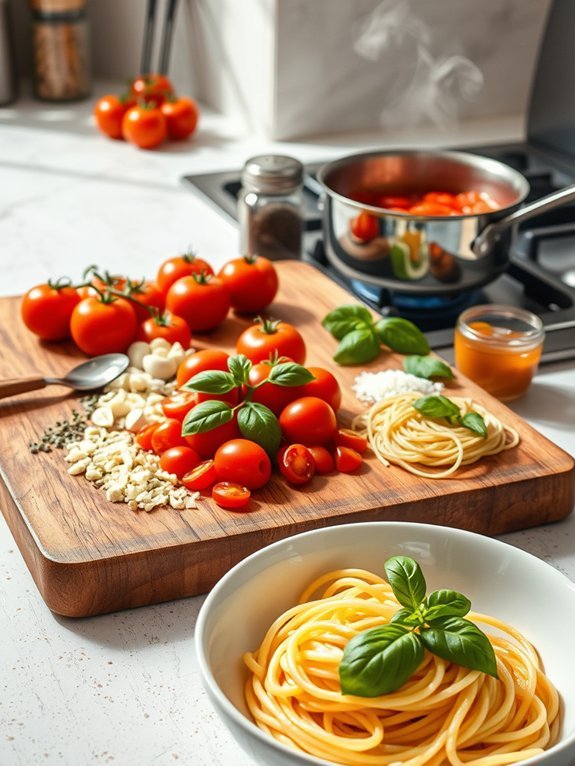
Cooking isn’t just about following a recipe; it’s about engaging with your ingredients and adjusting flavors as you go. One of the most common mistakes many home chefs make is forgetting to taste their dishes at various stages of preparation. Tasting your food while cooking allows you to fine-tune flavors, prevent disasters, and create a well-balanced meal.
Whether you’re making a simple pasta sauce or an intricate curry, getting into the habit of sampling your dish can elevate your cooking skills considerably.
For beginners and seasoned cooks alike, tasting as you go is an essential practice that can save a meal from being bland, over-seasoned, or overly salty. When you taste, think about what components are missing or if any flavors are overpowering. Adjusting spices, herbs, or even acidity can make a huge difference.
Remember, every dish is a personal expression, and tasting helps you create a dish that you not only enjoy but also one that’s perfect for those you’re serving.
Ingredients:
- 1 pound of pasta (spaghetti, penne, or your choice)
- 2 tablespoons olive oil
- 3 cloves garlic, minced
- 1 can (14 ounces) crushed tomatoes
- 1 teaspoon salt
- ½ teaspoon black pepper
- 1 teaspoon dried oregano
- 1 teaspoon dried basil
- 1 tablespoon sugar (optional)
- Fresh basil leaves for garnish
- Grated Parmesan cheese for serving
To make the pasta dish, start by cooking the pasta according to package instructions in a large pot of salted boiling water.
While the pasta cooks, heat olive oil in a medium saucepan over medium heat. Add the minced garlic, allowing it to sauté for about a minute until fragrant. Stir in the crushed tomatoes, and season the mixture with salt, black pepper, oregano, basil, and sugar if desired.
Allow the sauce to simmer for about 10-15 minutes, tasting along the way to adjust the seasoning as needed before combining with the drained pasta.
Overmixing Batter
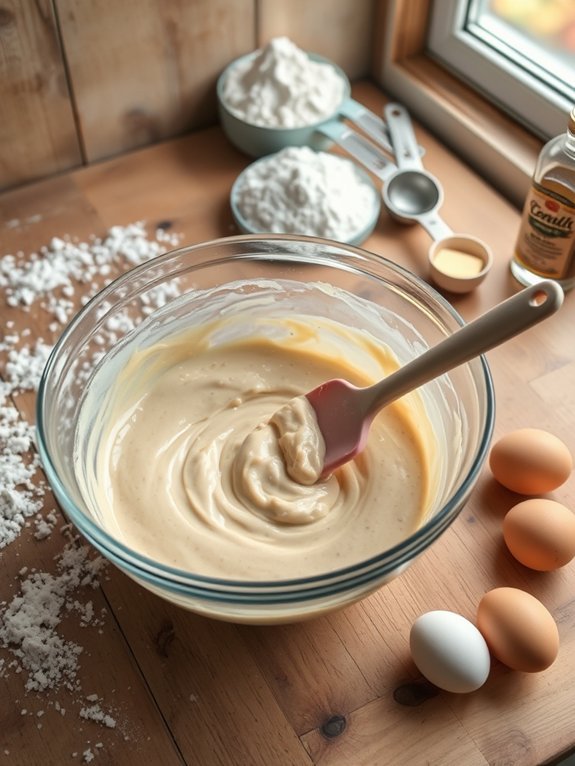
Baking can be a delightful experience, but it’s important to pay attention to the details, especially when it comes to mixing batter. One common mistake many home bakers make is overmixing the batter, which can lead to dense and tough baked goods. This happens when gluten, a protein in flour, develops too much from excessive stirring. The result is far from the light, airy texture typical of cakes, muffins, and pancakes. So, it’s vital to mix just until the ingredients are combined for the best results.
Let’s explore a simple recipe for classic vanilla cupcakes. These cupcakes are fluffy and light, perfect for any occasion, and ideal for honing your mixing technique. Remember to keep your mixing light and gentle, so that the batter remains tender and doesn’t become overworked. With a few simple ingredients, you’ll be on your way to creating the perfect treat, while avoiding the pitfall of overmixing.
Ingredients:
- 1 ½ cups all-purpose flour
- 1 cup granulated sugar
- ½ cup unsalted butter, softened
- 2 large eggs
- 1 cup milk
- 2 ½ teaspoons baking powder
- 1 teaspoon vanilla extract
- ½ teaspoon salt
In a large mixing bowl, cream together the softened butter and granulated sugar until light and fluffy.
Add in the eggs, one at a time, mixing gently after each addition.
Then, pour in the milk and vanilla extract, mixing just until combined.
In another bowl, whisk together the flour, baking powder, and salt. Gradually add the dry ingredients to the wet mixture, folding them in gently with a spatula until no streaks of flour remain.
Remember not to overmix; a few lumps are perfectly okay.
Fill your cupcake liners about two-thirds full and bake in a preheated oven at 350°F (175°C) for 18-20 minutes, or until a toothpick inserted in the center comes out clean.
For the best results when making these cupcakes, consider using room temperature ingredients. This helps guarantee a smoother batter and even baking.
Additionally, weigh your flour for accuracy rather than relying solely on volume measurements, which can lead to quirky results.
Be sure to watch the baking time closely, as ovens can vary.
Once they’re out of the oven, allow the cupcakes to cool fully before frosting to prevent the icing from melting.
Enjoy your delicious, fluffy cupcakes!
Assuming All Stovetops Cook the Same
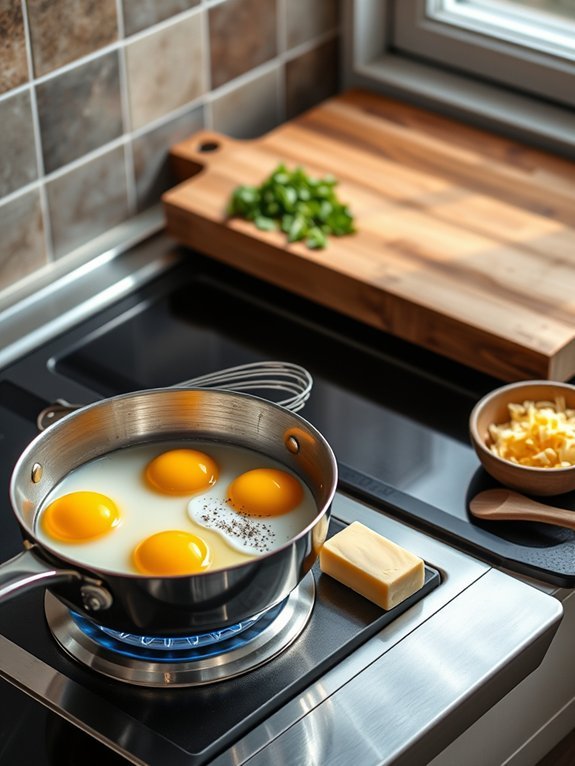
When it comes to cooking, one common mistake is assuming that all stovetops cook the same. Differences in heat output, the type of stovetop (gas versus electric), and even the quality of the cookware can lead to varying results in your dishes. This variability means that recipes need to be adjusted depending on your equipment, which can be particularly important when cooking delicate foods such as scrambled eggs.
Understanding your stovetop’s characteristics will yield the best results and guarantee your dishes are cooked to perfection.
To properly make scrambled eggs, you can begin with a basic recipe that allows for adjustments based on your unique stovetop. While the foundational ingredients remain the same, the cooking technique may vary slightly depending on the heat distribution and responsiveness of your stovetop.
Following a careful approach will help you achieve those fluffy, tender eggs that everyone loves for breakfast.
- 4 large eggs
- 2 tablespoons of milk or cream
- Salt, to taste
- Pepper, to taste
- 1 tablespoon butter or olive oil
- Optional: chopped herbs, cheese, or diced vegetables
In a bowl, whisk together the eggs, milk or cream, salt, and pepper until the mixture is well blended.
Place your chosen pan on the stovetop and heat it over low to medium-low heat, adding the butter or olive oil. Once the fat is melted and bubbling softly, pour in the egg mixture. Stir gently with a spatula, folding the eggs from the edges to the center, and continue to cook until the eggs are softly set and slightly runny; this should take about 2 to 6 minutes depending on your stovetop heat.
Remove from heat and let the residual heat finish cooking the eggs.
When cooking scrambled eggs, pay close attention to the heat levels of your stovetop. Electric burners can take longer to heat up but retain heat well, while gas burners provide immediate heat but can easily become too hot.
Start your cooking on the lower end of the heat scale and adjust as necessary if you notice browning or overcooking. Additionally, for fluffier eggs, consider using a whisk instead of a fork to aerate the mixture better before cooking.
Storing Leftovers Improperly
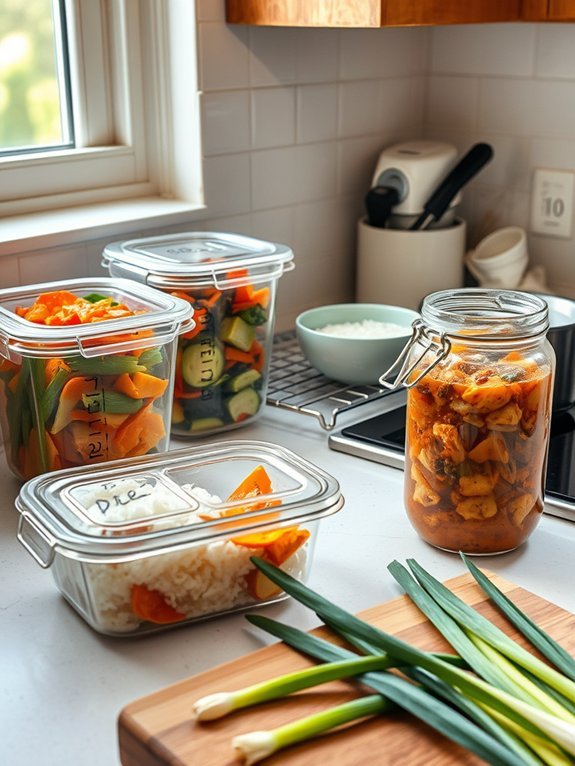
When it comes to preparing meals and guaranteeing their longevity, proper storage of leftovers can often be overlooked. However, with a few key methods and techniques, not only can you preserve the freshness and flavor of your meals, but you can also save money and reduce food waste.
Whether you’re dealing with a hearty stew, a delicious casserole, or even a simple stir-fry, knowing how to effectively store these dishes can make all the difference when you’re ready to reheat and enjoy them later.
To prevent spoilage and maintain taste, it’s crucial to cool leftovers down to room temperature before refrigerating or freezing them. This helps to prevent condensation from forming inside containers, which can lead to soggy textures and unwanted moisture.
Using airtight containers and labeling them with dates are also important steps to validate your leftovers are consumed within a safe time frame. With these basic principles in mind, let’s explore a recipe for a comforting dish that lends itself well to leftovers – a classic vegetable stir-fry.
Ingredients:
- 2 cups mixed vegetables (bell peppers, broccoli, carrots, snap peas)
- 1 cup cooked protein (chicken, tofu, or shrimp)
- 2 tablespoons soy sauce
- 1 tablespoon sesame oil
- 1 clove garlic, minced
- 1 teaspoon ginger, grated
- 1 tablespoon cornstarch (optional, for thickening)
- 1 cup cooked rice or noodles
- Green onions, chopped, for garnish
In a large skillet or wok, heat the sesame oil over medium-high heat. Add the minced garlic and grated ginger, stirring for about a minute until fragrant. Add the mixed vegetables and cooked protein, stir-frying for 5 to 7 minutes until the vegetables are tender-crisp.
If desired, you can mix cornstarch with a bit of water to thicken the sauce, then stir in the soy sauce, making sure everything is well coated. Finally, serve the stir-fry over a bed of rice or noodles, garnishing with chopped green onions.
When it comes to storing any leftovers from your vegetable stir-fry, be certain to cool the dish completely before transferring it into airtight containers. Divide the portions to make reheating easy, and label the containers with the date for future reference.
For best quality, consume the leftovers within three to four days if stored in the refrigerator or freeze them if you won’t be using them promptly. When reheating, do so gently in the microwave or on the stovetop to maintain texture and flavor.

